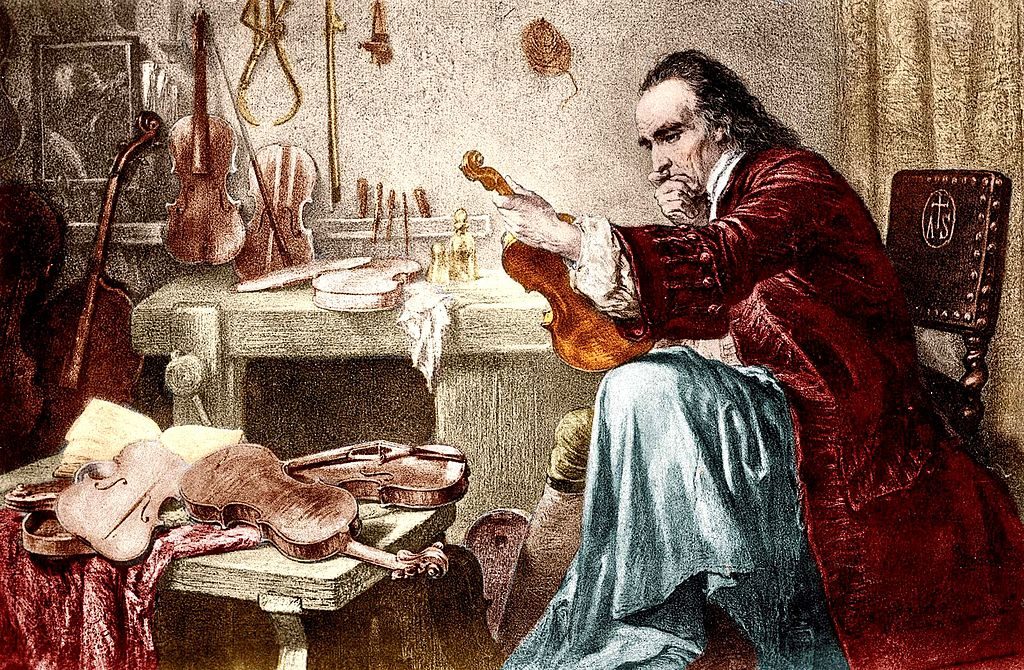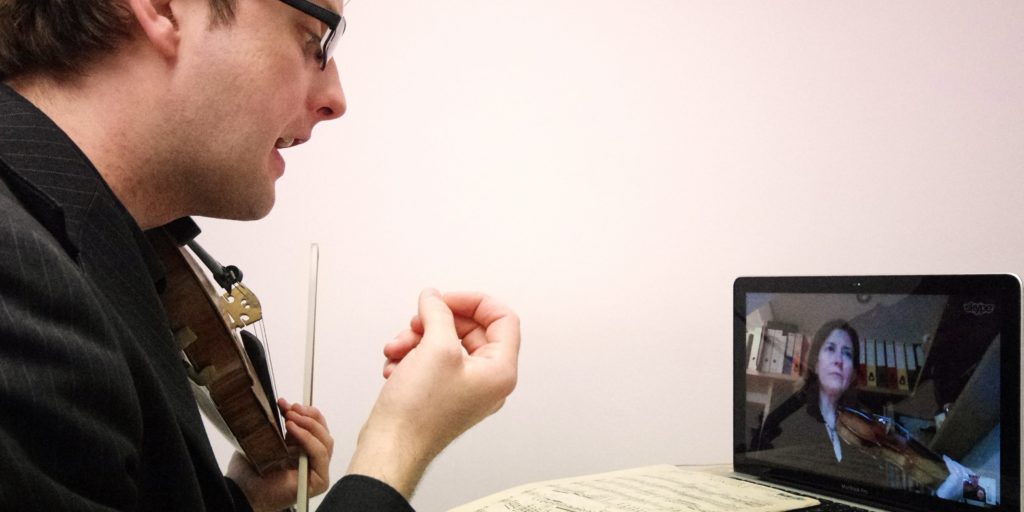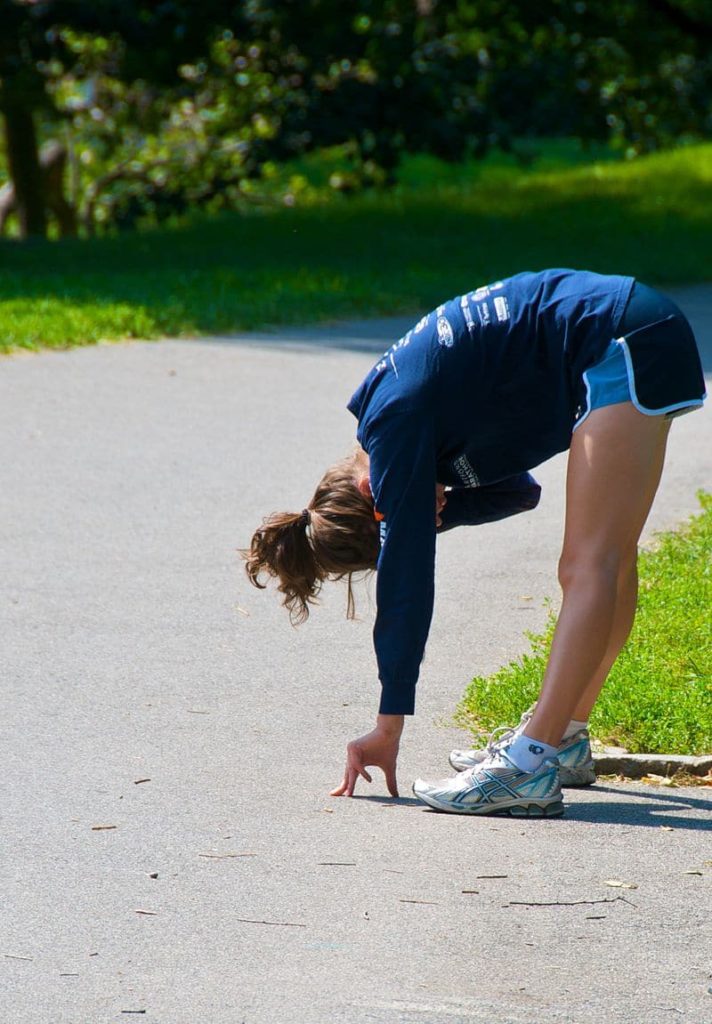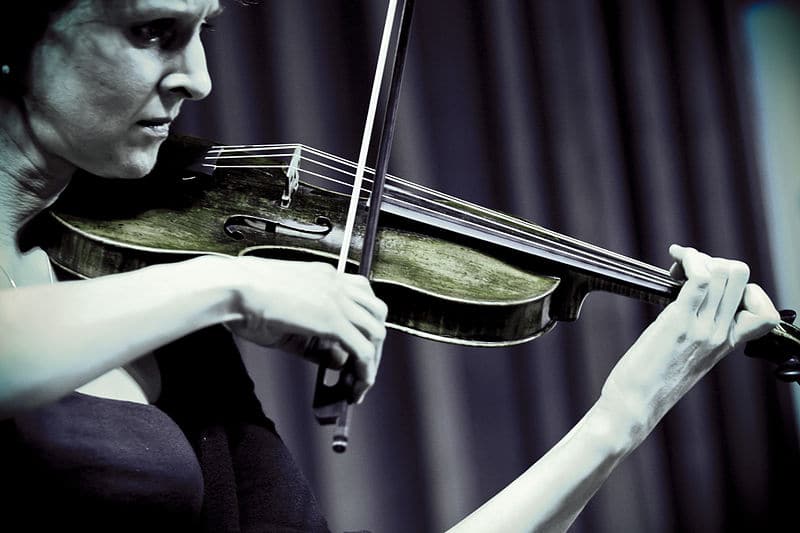Learning the violin is a life journey. Whatever attracted you to start, whether it was a particular performance, the uniquely beautiful sound of the violin, a desire to learn a new skill or the fact you had always wanted to play an instrument, there’s a lot of fun ahead. For more advanced students too, as you deepen your relationship with the instrument and the repertoire, there is always more to learn.
Progress takes diligence and patience, but there are certain things you can do that will keep you on the right track. These ten violin-playing tips can be followed at every level of playing and will have a really positive impact on your experience of the violin. Treat yourself to an immersive, holistic learning journey. If you’re stuck, if your practice feels stagnant, or progress has ground to a halt, use these ten tips as a checklist for progress.
There are many low-cost student violin kits on the market, and some of them are really horrible! They sound bad, look cheap, and even the most experienced professional would find them hard to play. Shop around for the best instrument you can afford. Nobody expects you to turn up to your first lesson, or even your 101st lesson, with a Stradivarius, but you will learn better if the violin works well.
There are plenty of good student sets too, and an experienced luthier will be able to improve a low-cost instrument by refining the set-up. Ask your teacher’s advice before buying a violin and talk to your violin shop about fitting a good violin bridge. If you don’t want to commit straight away, many dealerships offer rental options while you look around for the right violin to buy.

The cost of violin lessons can seem high, but one-to-one time with an experienced tutor is invaluable. Your teacher will assess where you are in the learning process and which skills you need to work on. A skilled musician will direct your learning and identify problems before you develop bad habits. One-to-one lessons offer a great opportunity for development. Modern technology gives the opportunity to have wonderful learning experiences wherever you are in the world. Many students now have violin lessons over Skype with their teacher in a different city or even continent.

Nowadays, many learners take lessons via webcam using software such as Skype.
Daily practise WILL lead to progress. Yes, there’s the research that says it takes 10,000 hours to master a skill, but don’t feel you have to practise for hours every day to see improvement. Much more important is HOW you practise. Work undertaken with focused concentration pays off, but mindless repetition can actually set you back. Study in small time-blocks with lots of breaks, maintaining an awareness of your focus. Before repeating a task, identify where the problem is and what you are aiming to change.
It takes a lot of brainpower to play the violin, but ultimately you make the sound by moving your body. Do some simple warm-up stretches before practising and keep a spot check of your posture throughout the session. Notice any areas of tension, analyse what is causing them (I’m clenching my jaw because I am trying too hard; I’m raising my right shoulder because I’m worried I will drop the bow). If you can’t release the tension by yourself, ask your teacher’s advice. Many problems can be resolved by simply remembering to breathe and maintaining awareness.

A flexible, well-balanced body posture is essential for good violin-playing.
When learning how to manage the violin physically, it is sometimes hard to concentrate on how you sound. And because the violin is placed so close to the left ear, it is not always easy to get a real sense of how the performance sounds to others. Record your practise as often as you can. Listen back, looking for positives as well as points you want to improve.
Whatever repertoire you are learning, it is really important to listen to the piece. By listening to other violinists, not only will you develop a well-rounded idea of your piece, you will develop your ear. Passive listening (listening away from your instrument) can improve pitch, tone and phrasing, while active listening (with the music in front of you and the violin or an air violin in your hand) can actually trigger physical improvements and musical insights. For example, miming your bowing along with a section of a recording can deepen your muscle memory of that bowing, and help identify problem areas. There are literally thousands of videos and recordings available on YouTube, featuring some of the greatest violinists who ever lived. Sometimes you can even get ideas for fingerings and bowings by watching your favourite soloist play!
Technical exercises and scales are the building blocks of violin music. Working on these simple patterns out of context of the repertoire gives an opportunity to improve intonation and tone production across the board. Scales also help teach an understanding of key. You’ll find loads of scales and technical exercises in our resource library.
All music, no matter how simple, comes with some historical and social context. Is your piece based on a dance or a song? Who was the composer, and when was it written. For more substantial pieces, it can be interesting to find out why the work was composed and what was going on in the composer’s life at the time. If someone had fallen in love or was suffering from depression, those feelings will be reflected in the music and might inform how you choose to express certain phrases.
A major reason we get nervous during performance is because it is an unfamiliar situation and therefore fraught with pressure. Practise performing, either by simulating performances where you play your piece without stopping to an armchair full of teddy bears or smart phone microphone, or set up performance opportunities with friends. Integrate the act of performing into your preparation and it will soon feel natural.

To give a good performance, you need to practise performing! Make performance practice part of your regular practice habits.
It is easy to panic and feel stressed if things are not going to plan. Whatever your age or playing level, a bad practise session can feel like a personal disaster. If your practise is really going badly, stop! Take a break, go for a short walk, try some breathing exercises or have a glass of water. Never pick up your violin expecting it to feel the same as it did yesterday, that would be like walking into a room and finding everyone in the exact same mood they were the day before.
Begin where you are today, with a sense of exploration. If something will not go right, break it down to open strings, practise some slow bows or go back to relaxed scales.
How the Violin Makes Sound
The body of the violin is a hollow space that functions as an amplifier for vibration. The strings are suspended above the body by a bridge, a small piece of maple wood, which stands on the belly of the violin between the F holes and which is secured to the belly by the tension of the strings. The vibration from the stings is transferred through the bridge to the body of the instrument via the internal sound post. Vibrations are amplified as they meet the hard wood at the back of the instrument and come out through the soft front body and the F holes.
The F holes serve to connect the air on the inside of the instrument to the air outside. As a result of their length and shape, they allow the part of the belly between the holes to move more easily and to vibrate more freely than the other parts of the instrument.
The sound-post, the small upright piece of wood inside the violin, prevents the belly from collapsing under the tension of the strings and couples the vibrations between the stiffer back plate and the bridge. The position of the sound-post is critical to the sound of the instrument. The bass-bar sits inside the belly on the bass-foot side of the bridge, the side under the G-string or bass end of the instrument. This extends beyond the length of the F holes and transmits the motion of the bridge over a large area of the belly.
The air inside the instrument vibrates, exactly like the air in a bottle vibrates when you blow across the top of it.
The violin does not work like an electric amplifier. An electric amp takes a signal with a small amount of power and uses electricity to turn it into a more powerful signal. On the violin, the sound produced by the body of the instrument is created entirely with energy put into the string from the bow. The body of the violin is designed to make the conversion process of vibration to sound optimally efficient. A string on its own makes little sound.
Vibration of the violin strings can be achieved by plucking the strings, which is called pizzicato, or by drawing a bow across them, which is called arco. There are several other ways of making sound, known as extended techniques, which include col legno playing -hitting the string with the wood of the bow- or even tapping on the body of the instrument to make percussive noises.
The bow is strung with horsehair, normally about 150 to 200 hairs from a horse’s tail. Rosin, tree resin mixed with wax, is applied to the hair to increase friction. The surface of the hair shaft looks a little like the tiles on a roof, and the rosin adheres to the raised areas on the surface. Without rosin the hair is too smooth and will slide over the string with virtually no sound.
As the bow is drawn across the string, the air molecules in and around the violin move backwards and forwards, varying the air pressure by tiny amounts. The number of oscillations or vibrations of air pressure per second is called the frequency and is measured in cycles called Hertz (Hz). The pitch of a note is determined by the frequency, for example, 440 Hz, or 440 vibrations per second is the note A in the treble clef, the pitch of the A string. 220 Hz is exactly one octave lower, the A played with the first finger on the G-string.
The pitch of the vibrating string also depends on its thickness. A thicker string will sound lower than a thin one. The tension of the string also determines pitch: the higher the tension, the higher the note. Another differentiation is the length of the string that is free to vibrate. As fingers are added to the string on the fingerboard, the pitch of the note gets higher as the string is effectively shortened. Harmonics produce another mode of vibration, in which the sound waves produced by the string are a fraction of the length of those normally produced.
Here Mark Wood demonstrates the physics of sound on his seven string electric fiddle. This is an extreme example of how the pitch works across the instrument, but it is also clear that the resonance created with electrical signals is very different to that of an acoustic violin with all its nuances of shape.
Tone Production with the Bow
The three main points of violin technique that have an impact on the sound are the weight, speed and point of contact with the bow. The bow must always be drawn at a right angle to the bridge, in a straight line between bridge and fingerboard. Simon Fischer describes this constant point of contact like the needle of a record player in the groove of a vinyl record.
Once the bow technique is developed to allow the flexible, spring-like action in the right arm and bow, the three aspects of tone production and nuance can be explored.
Speed of Bow
The faster the bow stroke, the greater the energy that is transmitted to the violin. If bow pressure remains constant, a change in speed will produce an increase in volume. Decreasing the speed will mean the sound gets quieter. For a musical phrase that requires a constant dynamic, therefore, an equal bow speed should be maintained throughout. A frequent mistake is to use too much bow at the beginning of the stroke and run out towards the end.
Pressure
The pressure of the bow on the strings comes from the weight of the bow itself, the weight of the arm and hand, controlled muscular action, or a combination of the these factors. The bow is heaviest at the frog and therefore whenever an even dynamic is required the pressure must be stronger towards the point. The amount of pressure helps determine the volume of the sound, but the quality of pressure is also important. Too much pressure crushes the string and actually prevents it from vibrating, and can even result in a change of note if the string is pulled too hard. The weight of the hand and arm and the pressure from the muscles must be transferred with freedom of movement and without tension. For example, a rigid right shoulder detracts from the ability to properly use the weight of the arm to apply pressure to the string.
Watch this tutorial by Yehudi Menuhin in which he demonstrates a series of exercises for developing a fluent, flexible right hand:
Sounding Point
The third factor in tone production is the sounding point or point of contact. This is the point in relation to the bridge where the bow has contact with the strings. The optimal sounding point changes in relation to the varying speeds and pressures of the bow, and to the length and thickness of the string. On thinner strings the sounding point is nearer to the bridge than on thicker strings; in higher positions it is closer to the bridge than in lower positions.
Tartini Tones
A further acoustic phenomenon, which Giuseppe Tartini used in his compositions to great effect, also has an impact on tone production. When thirds or sixths are played on the violin, especially on the A and E strings, a third note sounds well below the pitch of the two written notes. These resultant tones, also known as Tartini tones, exist when any two notes are played simultaneously. The pitch of the third tone should be consonant with the double stop. By awareness of these tones, intonation and resonance reach a new level.
Here is Tartini’s Devil’s Trill Sonata. Listen the depth of tone in the double stops.
